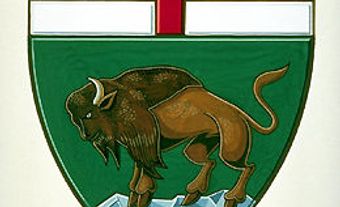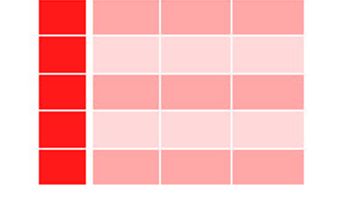In the Manitoba provincial election on 3 October 2023, Wab Kinew and the New Democratic Party (NDP) won a majority government with 34 seats. Kinew, a 41-year-old Anishinaabe man, became the first First Nations person to be elected premier of a Canadian province. The Progressive Conservative Party was reduced from 35 seats to 22, while the Liberal Party won one seat. Manitoba’s lieutenant-governor is Anita R. Neville.

Provincial Government Structure
There are 57 seats in Manitoba’s provincial government. Each seat is held by a Member of the Legislative Assembly (MLA) elected by eligible voters in their electoral district. The boundaries of the province’s 57 electoral districts are set to include between 250 and 400 voters. General provincial elections are held every four years on the first Tuesday in October. Sometimes, should the party in power see it as advantageous, an election may be called before this date. When the party in power holds a minority of seats, elections may also occur before four years have passed and the government no longer has the confidence of the Assembly.
As with the other provinces, Manitoba uses a first-past-the-post electoral system, meaning the candidate with the most votes in each electoral district wins. Typically, the party with the most seats forms the government, and the leader of this party becomes premier. However, a party with fewer seats may also form a coalition with members of another party or parties to form the government.
Technically, as the monarch’s representative, the lieutenant-governor holds the highest provincial office, though in reality this role is largely symbolic. (See also Premiers of Manitoba; Lieutenant-Governors of Manitoba.)
The premier typically appoints members of the Cabinet from among the MLAs of the party in power. Cabinet members are referred to as ministers and oversee specific portfolios. Typical portfolios include finance, health and education.
First Government
Manitoba joined Confederation in 1870. Its legislature met for the first time on 15 March 1871. It consisted of an elected legislative assembly with members from 12 English and 12 French electoral districts, an appointed legislative council, and an appointed executive council that advised the government head, Lieutenant-Governor Adams G. Archibald.
Since 1871, the province has moved from communal representation to representation by population and from a non-partisan to a political party government.
Late 1800s – Early 1900s
While Manitoba's system of responsible government matured during the 1870s, communal loyalties rather than party politics dominated public representation. Throughout the 1880s, however, a strong Liberal opposition to John Norquay’s non-partisan government developed under Thomas Greenway. After the election of 1888, Greenway's Liberals formed Manitoba's first declared partisan government. They were defeated in 1899 (on issues of extravagance and a weak railway policy) by an invigorated Conservative Party under Hugh John Macdonald. When Macdonald resigned in 1900, hoping to return to federal politics, R.P. Roblin became premier, a position he held until 1915, when a scandal over the contracting of the new legislative buildings brought down the government in its fifth term.

In 1920, against the incumbent Liberal government of T.C. Norris, the United Farmers of Manitoba first entered provincial politics. The UFM sent 12 members to the Legislative Assembly, heralding a new era of non-partisan politics. In the election of 1922, the UFM won a modest majority and formed the new government.
The farmers chose John Bracken as their leader. He remained premier until 1943 despite the UFM withdrawing from politics in 1928. Bracken then formed a coalition party, the Liberal-Progressives. It won a majority in the assembly in 1932, but only gained a plurality in the 1936 election with Social Credit support. Bracken continued as premier in 1940, leading a wartime government of Conservative, Liberal-Progressive, Co-Operative Commonwealth Federation (CCF) and Social Credit members.
Second World War – Late 1980s
John Bracken became leader of the federal Conservatives in 1943 and was replaced by Stuart S. Garson. In 1945, the CCF left the coalition government formed during the war. The Conservatives left it in 1950 and the Social Credit Party simply faded. From 1948, Premier Douglas Campbell led the coalition. After 1950, however, it was predominantly a Liberal government.
From 1958, the Conservatives under Duff Roblin governed the province until Edward Schreyer’s New Democratic Party (NDP) took over in 1969 with a bare majority. Schreyer’s government survived two terms. During its years in office, many social reforms were introduced and government activity in the private sector was expanded.
Between 1970 and 1990, there was a dramatic realignment of provincial politics. This began with the virtual disappearance of the provincial Liberal Party and the rise to power of the NDP under Schreyer and Howard Pawley. In 1977, Sterling Lyon led the Conservative Party to victory on a platform of reducing the provincial debt and returning to free enterprise. But his government lasted only one term. In 1981, the NDP returned to power under Pawley. They were re-elected in 1985. The Lyon government, in fact, was the only one-term government in Manitoba's history to that time. The political tradition of the province has been notable for its long-term stability, particularly during the era of the UFM and later coalition governments. Typical of the social democratic initiatives of the NDP was the introduction of a government-run automobile insurance plan and the 1987 plan to purchase Inter-City Gas Co. The government's attempt to increase bilingual services within the province aroused old passions, however, and was abandoned.
Late 1980s – Present
Howard Pawley's NDP was ousted in 1988 when Gary Filmon led the Conservatives to an upset minority victory. Filmon's government was precarious, and the Liberal opposition was extremely vocal in its opposition to the Meech Lake Accord. ( See also Meech Lake Accord.) Debate over the Accord dominated the provincial agenda and was finally killed by procedural tactics led by NDP Cree MLA Elijah Harper. Filmon went to the polls immediately following the death of the Accord in 1990 and eked out a slim majority victory. This majority enabled him to finally dictate the legislative agenda. He began focusing his government's efforts into bringing the province's rising financial debt under control. His government's success in this endeavour won Filmon an increased majority in April 1995.
Beginning with the election of Gary Doer in 1999, the NDP dominated provincial politics until 2016. In 2009, Doer was nominated to serve as ambassador to the United States and selected one of his MLAs, Greg Selinger, to replace him. In the 2011 election, Selinger returned with a majority government. Selinger’s leadership was challenged in the fall of 2014 when five cabinet members left their posts, sparking an NDP leadership race in the winter of 2015. While Selinger survived the leadership race, he was ousted as premier about a year later.
In April 2016, Manitobans elected Progressive Conservative leader Brian Pallister to a majority government, ending 17 years of NDP rule. The win was historic: the PCs took 40 of the province’s 57 seats, one of the largest majorities in provincial history. Pallister campaigned on promises of austerity. He vowed to reverse an increase to the provincial sales tax, as well as eliminate a budget deficit.

In the summer of 2019, Pallister called a general election about a year earlier than required by law. According to Pallister, his government had met most of its promises and needed a new mandate from voters. On 10 September 2019, the PCs again won a majority government, this time taking 36 seats. However, Pallister’s government declined in popularity during the COVID-19 pandemic. Its social distancing protocols were looser than those recommended by most health experts, leading to major spikes in infections. As a result, Manitoba had the second highest COVID-19 death rate after Quebec. With his approval rating at approximately 32 per cent — by far the lowest of all premiers in Canada — Pallister resigned as premier on 1 September 2021. He resigned his seat in the legislature on 4 October.
On 30 October 2021, the Progressive Conservative Party held a leadership race. Heather Stefanson, Pallister’s former deputy premier as well as a former Manitoba attorney general and cabinet minister, beat Shelly Glover, a former cabinet minister in Stephen Harper’s government. The margin was only 363 votes. Glover refused to concede and launched a legal challenge. Stefanson, however, was sworn in as premier on 2 November 2021, becoming Manitoba’s first female premier.
In office, Stefanson unveiled her flagship policy package, The Path to Progressing Together. It pledged advances on many of her previous projects, such as addressing the nursing shortage and improving access to mental health services. It also set commitments for improving cooperation with Indigenous leaders, decarbonizing the Manitoba economy, and boosting international investment. But like Pallister, Stefanson suffered very low public support. She had only 25 per cent approval in a March 2022 poll. She drew criticism for transferring ICU patients out of province, for failing to disclose the sale of $31 million in personal property, and most notably for refusing to search the Prairie Green landfill for the bodies of two murdered Indigenous women.
In the election on 3 October 2023, Stefanson’s PCs were reduced from 35 seats to 22. Wab Kinew and the NDP won a majority government with 34 seats. Kinew, a 41-year-old Anishinaabe man, became the first First Nations person to be elected premier of a Canadian province. Stefanson announced in her concession speech that she would be stepping down as PC leader.
(See also Premiers of Manitoba.)

 Share on Facebook
Share on Facebook Share on X
Share on X Share by Email
Share by Email Share on Google Classroom
Share on Google Classroom






